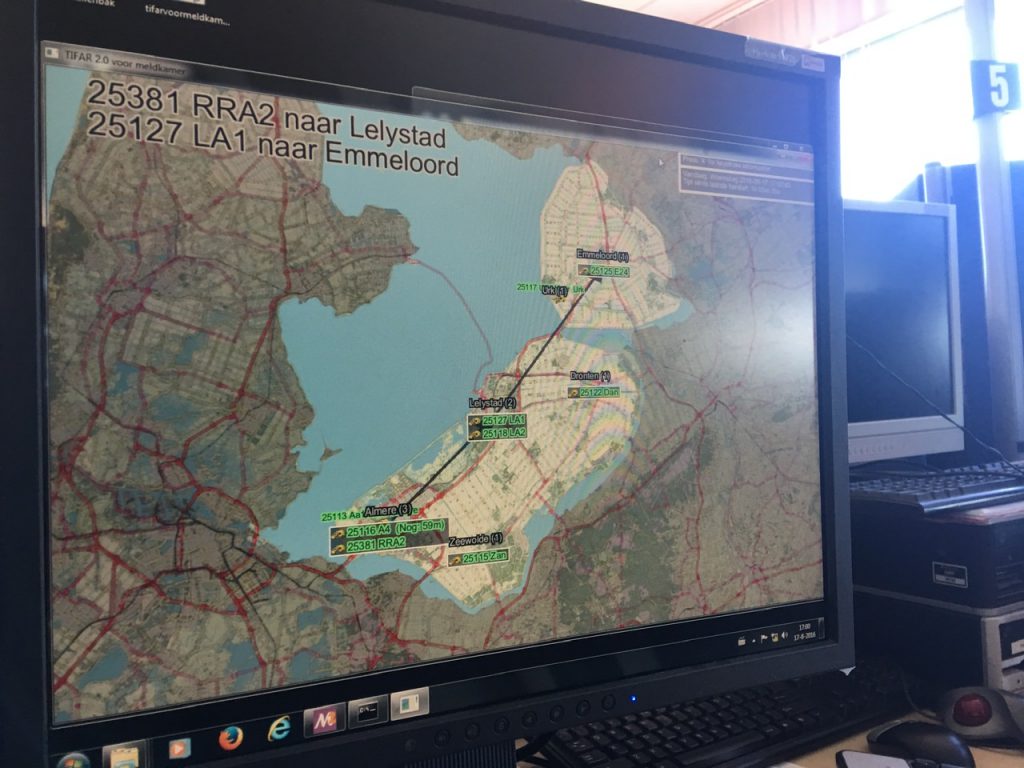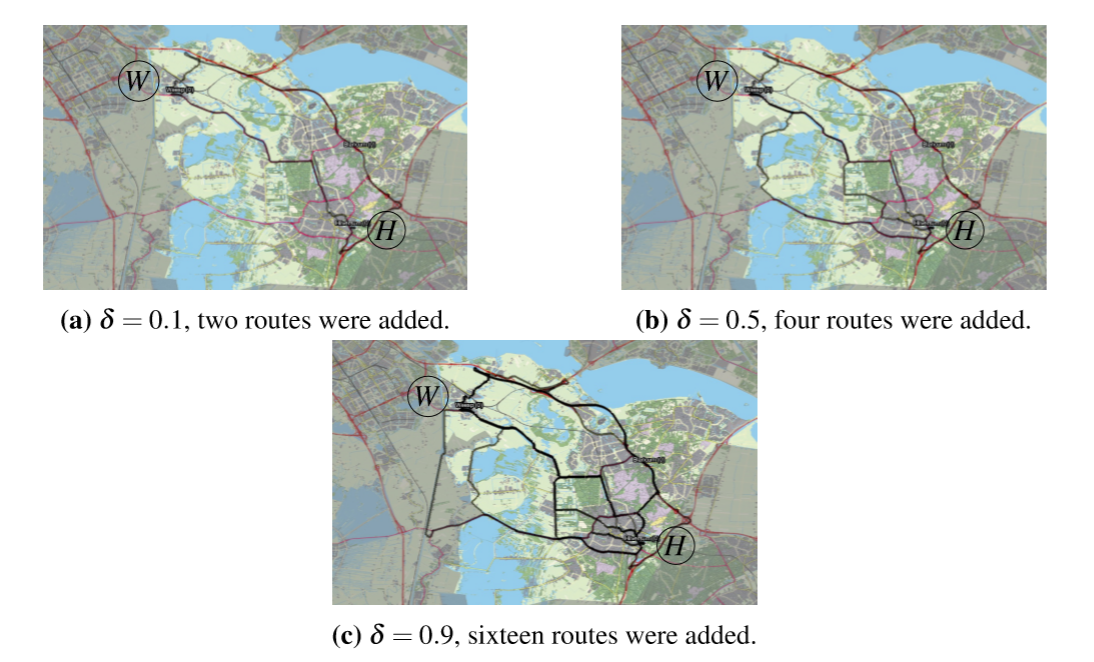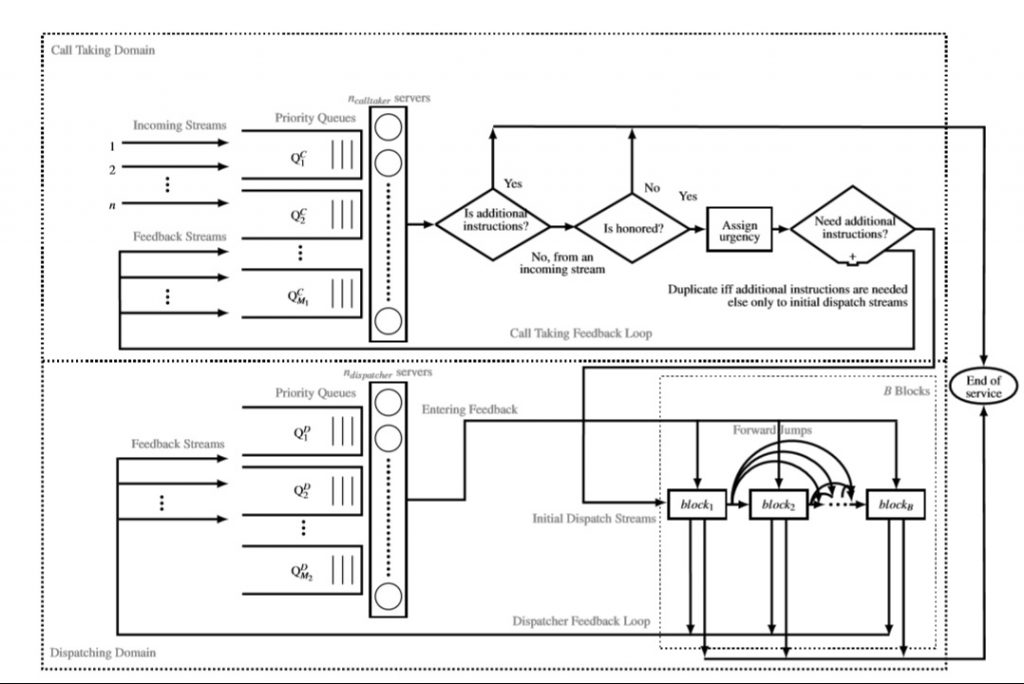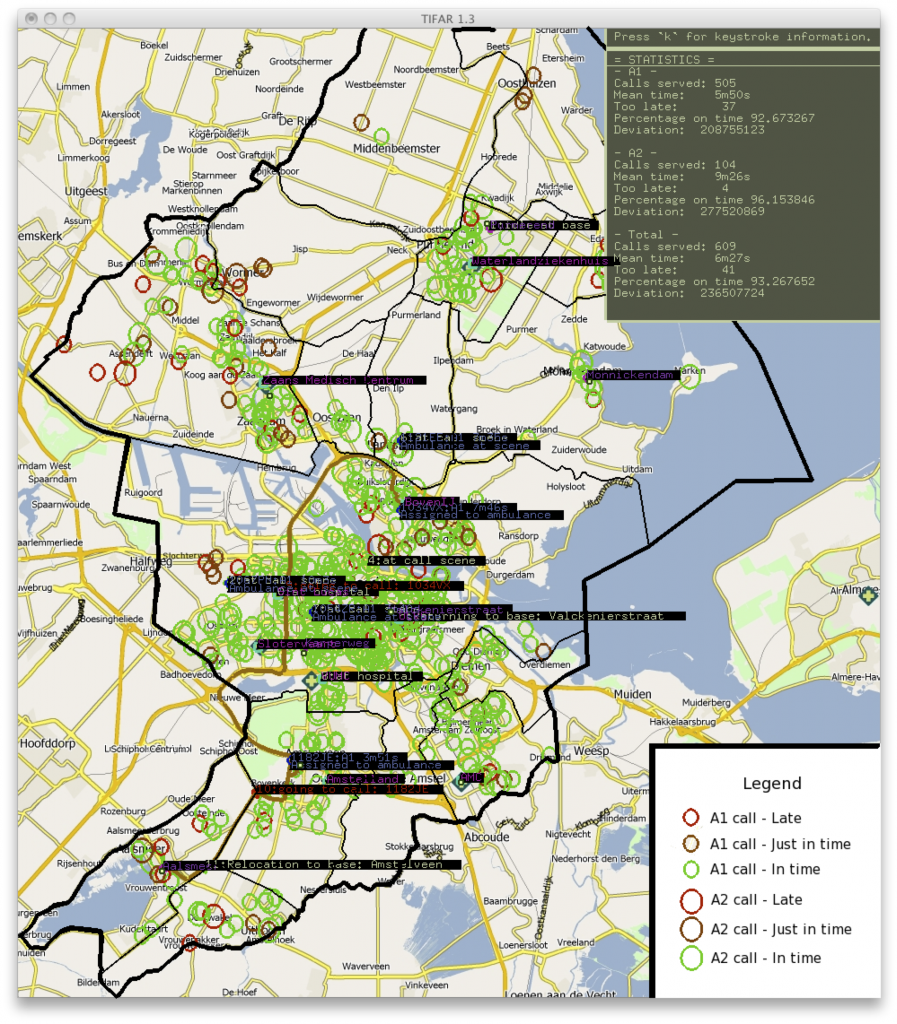De combinatie van mijn master-opleidingen Applied Mathematics (MSc) en Science Education & Communication (MSc) is zeer zeldzaam. Enerzijds geeft dit een zeer gedegen wiskundige basis, anderzijds geeft het vaardigheden in het effectief communiceren. Mijn vrije ruimte besteedde ik aan vakken binnen de software-ontwikkeling, modellering en optimalisatie. Daarna heb ik mijn wetenschappelijke promotie (PhD) volbracht aan het Centrum Wiskunde & Informatica en de Vrije Universiteit Amsterdam. Tijdens mijn promotie verbond en versterkte ik zowel deze kennis als deze vaardigheden, door ze met enthousiasme op de ambulancezorg toe te passen. Uit de meldkamersystemen viel op te maken dat mijn methoden de te late ritten in de levensbedreigende categorie met 30% wisten te verminderen. Daarmee heb ik statistisch gezien al meerdere levens gered.
Peer-reviewed publications
Hier staat een selectie van mijn wetenschappelijke werken. Alle gepubliceerde werken zijn ‘peer reviewed’, wat betekent dat ze aan de geldende wetenschappelijke standaarden voldoen. Vanwege de toegankelijkheid voor wetenschappers wereldwijd zijn de ‘abstracts’ van de artikelen Engelstalig.

Proefschrift: Efficient Planning of Ambulance Services: Theory and Practice
Ambulancezorg is een toepassingsgebied waaraan wiskundige optimalisatie-modellen substantieel kunnen bijdragen. Dit proefschrift behandelt diverse nieuwe modellen, die niet alleen vanuit een wetenschappelijk oogpunt interessant zijn, maar die ook grotendeels hun weg gevonden hebben naar de praktijk.
Van Buuren, M. (2018). Efficient Planning of Ambulance Services - Theory and Practice (Doctoral dissertation), VU University Amsterdam, ISBN:978-94-028-1010-3.
Download // VU Repository

Ambulance Dispatch Center Pilots Proactive Relocation Policies to Enhance Effectiveness
In life-threatening emergency situations in which every second counts, the timely arrival of an ambulance can make the difference between survival and death. In practice, the response-time targets, defined as the maximum time between the moment an incoming emergency call is received the moment when onsite medical aid is provided, are often not met. A promising means to reduce late arrivals by ambulances is to proactively relocate ambulances to ensure good coverage by the available ambulances in real time. This paper evaluates two dynamic relocation policies that an ambulance service provider in the Netherlands modified for operational use and implemented in a software tool for real-time decision support. The policies were used in a pilot program within a dispatch center for 12 weeks. Based on the success of this pilot, our policies were adopted for ongoing use and permanent implementation. This paper describes the relocation methods, evaluates the pilot, provides statistics for efficiency improvements, and discusses the experiences of ambulance dispatchers and management.
M. van Buuren, C. J. Jagtenberg, T. C. van Barneveld, R. D. van der Mei, and S. Bhulai (2018). Ambulance Dispatch Center Pilots Proactive Relocation Policies to Enhance Effectiveness, Interfaces 48.3, pp. 181–289, DOI:10.1287/inte.2017.0936
Download author's copy //
Visit Inform's website // Download full article on Scemantics Scholar

Demand-point Constrained EMS Vehicle Allocation Problems for Regions with Both Urban and Rural Areas
Governments deal with increasing health care demand and costs, while budgets are tightened. At the same time, ambulance providers are expected to deliver high-quality service at affordable cost. Maximum reliability and minimal availability models guarantee a minimal performance level at each demand point, in contrast to the majority of facility location and allocation methods that guarantee a minimal performance that is aggregated over the entire ambulance region. As a consequence, existing models generally lead to overstaffing, particularly in ‘mixed’ regions with both urban and rural areas, which leads to unnecessarily high costs. This paper addresses this problem. First, we introduce the concept of demand projection to give fundamental insight into why this overstaffing takes place. Next, we overcome the overstaffing by the so-called adjusted queuing (AQ) solution that provides generalizations of the existing models. We provide mathematical proofs for the correctness of the AQ solution. Finally, to assess the performance of the AQ-solution we have performed extensive numerical experimentation, using real data from four ambulance regions in the Netherlands. The results show that in all cases the AQ-solution indeed leads to better ambulance care than the existing solutions, while reducing staffing cost.
M. van Buuren, R. D. van der Mei, and S. Bhulai (2018). “Demand-point Constrained EMS Vehicle Allocation Problems for Regions with Both Urban and Rural Areas”, Operations Research for HealthCare 18, pp. 65--83, DOI:10.1016/j.orhc.2017.03.001
Download author's copy //
Visit on Science Direct // Download full article on VU University

On-route Coverage by Available Ambulances Through Route Optimization
Dispatchers usually relocate ambulances by the fastest route. However, there are cases when the fastest relocation is not the best one, as the transitory coverage while driving over the fastest route can be relatively low. When a fast relocation happens over the highway with a limited number of exits the ambulance is less flexible, while a longer route through villages can lead to a higher performance due to transitory coverage. In this article, we study the effect of taking alternative routes in ambulance relocations, which is an unaddressed problem in the literature. Results for four actual ambulance regions show that this so-called dynamic routing can help at an operational level to obtain a more fair distribution of ambulance coverage.
M. van Buuren, C. W. P. Huibers, and R. D. van der Mei (2018). On-route Coverage by Available Ambulances Through Route Optimization, Unpublished.
Download author's copy

EMS Call Center Models With and Without Function Differentiation: A Comparison
In pre-hospital health care the call center plays an important role in the coordination of emergency medical services (EMS). An EMS call center handles inbound requests for EMS and dispatches an ambulance if necessary. The time needed for triage and dispatch is part of the total response time to the request, which, in turn, is a key performance indicator for the quality of EMS. Call center agents should perform the triage efficiently, so that entering calls have short waiting times, and the dispatch of ambulances must be adequate and swift to get a fast EMS response. This paper presents and compares three discrete event simulation models for EMS call centers: the first has two different call center agent classes between whom communication tasks are split, while the second has one class of call center agents that share all tasks. The third model is a combination of both. The models provide new insight into the EMS call center processes and can be used to address strategic issues, such as capacity and workforce planning. The analysis and simulations of urgent communication and decision processes in this paper are valuable to other emergency call centers.
M. van Buuren, G. J. Kommer, R. D. van der Mei, and S. Bhulai (2017). EMS Call Center Models With and Without Function Differentiation:A Comparison.Operations Research for Health Care 12, pp. 16–28, DOI:10.1016/j.orhc.2016.12.001
Download author's copy // Visit on Science Direct //
Download full article on VU University

Invited paper: Evaluating Dynamic Dispatch Strategies for Emergency Medical Services: TIFAR Simulation Tool
In life-threatening emergency situations, the ability of emergency medical service (EMS) providers to arrive at the emergency scene within a few minutes may make the difference between survival or death. To realize such extremely short response times at affordable cost, efficient planning of EMS systems is crucial. In this article we will discuss the Testing Interface For Ambulance Research (TIFAR) simulation tool that can be used by EMS managers and researchers to evaluate the effectiveness of different dispatch strategies. The accuracy of TIFAR is assessed by comparing the TIFAR-based performance indicators against a real EMS system in the Netherlands. The results show that TIFAR performs extremely well.
M. van Buuren, R. D. van der Mei, K. I. Aardal, and H. N. Post (2012). Evaluating Dynamic Dispatch Strategies for Emergency Medical Services: TIFAR Simulation Tool, Proceedings of the 2012 Winter Simulation Conference, pp. 509–519.
Download author's copy // Download full article on Informs